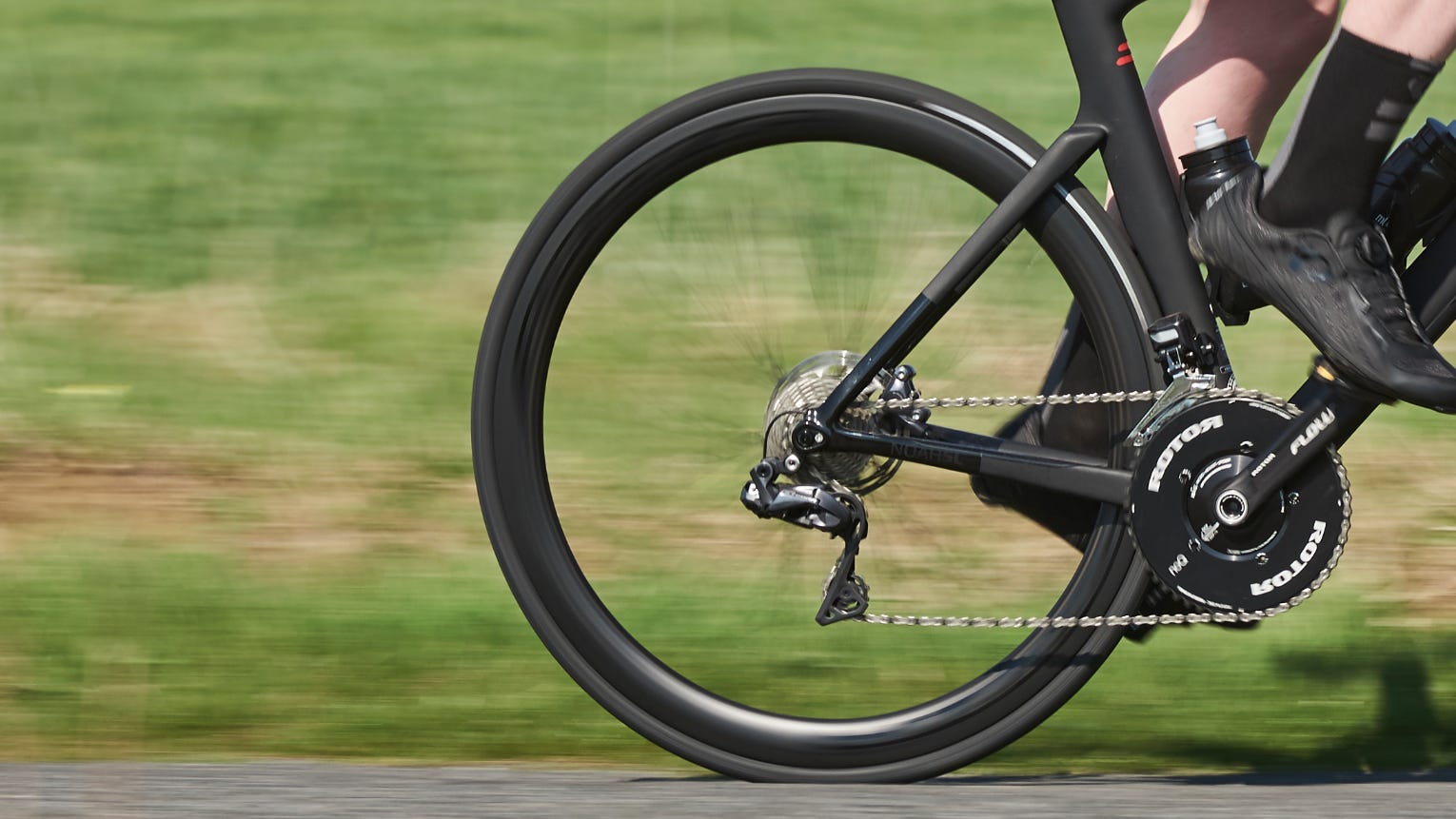Everything you need to fix a puncture
If you're worried about punctures, here's a short list of everything you need to make sure your ride isn't ruined

Tyre Levers
Unless you have the grip strength of a professional climber, tyre levers are a very useful way to pry that stubborn tyre off the rim. Some will be loose enough to just use your bare hands, while others will be infuriatingly tight.
Now tyre levers come in various shapes, sizes and materials and everybody has their own preference as to exactly which combination makes for the best product. But fundamentally, they’re all very similar. One end has some kind of hooked/curved section to get under the bead of the tyre, the other often has a system to clip round a spoke and hold it in place and in between there needs to be a certain body length to provide the required leverage.
For carbon rims, it’s pretty much universally agreed that plastic is the best material. Metal is too tough and you can risk damaging the wheel if you get a little over-eager, whereas plastic will almost certainly break before you take a chunk out of your fancy rim. Park Tool have come up with a fancy combination, though, in their metal core levers that feature a plastic outer to prevent damage, but a metal core to stop the lever flexing too much under pressure. That, combined with the fact that they’re extra-long, make them really good for even the tightest of tyres.

Tyre boot
A tyre boot is a curious thing, because it’s more of a vocation than a specific object. What we mean by that is that a tyre boot is whatever you use to fulfil that function, rather than something you necessarily take with you to serve that specific purpose.
Essentially, a tyre boot is something that you put between the tube and tyre at the point the tyre has been pierced to make sure you don’t puncture again on the way home. They’re especially useful for larger holes in the tyre that leave you at risk of puncturing again through that same opening.
Some brands offer a purpose-made tyre boot as part of a repair kit, but if you don’t have one then plenty of things in your pocket will do the job. Gel wrappers are a good one, as they’re flexible and tough. Old five-pound notes were a favourite too as they were also rather tough; we’ve not used the new ones yet but from the looks of them they’ll be just as good.
Other things we’ve used as tyre boots in the past include the little instructional piece of paper in the repair kit, a bit of an old tyre we’d cut up and stored in our saddlebag, a train ticket (best not to use one for a journey you’re yet to take) and even a folded over zip lock plastic bag on the basis that it was probably better than nothing.
One big bonus of a purpose made tyre boot over something rushed into that role on the fly is that shop bought boots are generally sticky-backed, meaning you can stick them to the inside of the tyre and remove the risk that they might slip out of place as you put the tyre back on the rim.

Puncture repair kit
While not always the first choice for roadside repairs – that’s your spare tube – we always tend to carry a repair kit with us on the basis that you’re always one puncture away from a walk home (seeing as you can’t carry an infinite number of spare tubes).
Most repair kits come with three essential pieces: the patch, the sticky stuff (vulcanising solution) and a small piece of sandpaper to roughen the surface of the tube before you apply either of the former things. It’s just about as tried-and-tested a method as exists in cycling and as such the basic ingredients of a puncture repair kit haven’t changed in decades.
Spare tube
Either your first choice or last resort depending on how much time you have on your hands; the spare tube is the best way to get back riding asap. Just take out the old tube, stick the new one in and you’re good to. Remember to check the tyre though, as nobody wants to be that guy who punctures again 100 metres down the road.
You can either stick the punctured tube in your back pocket to fix later or, if you’re Captain Cashmoney, simply throw it away and buy another spare for the next ride. We tend to fix them, but then we’re tight b*stards…

Pump
Once you’ve fixed the puncture, you need to be able to re-inflate the tube so you can get riding again. There are pretty much two roadside options for this: either use a mini pump or an inflator with with a CO2 canister. Inflators will do a far quicker job and it’ll be far easier to reach high pressure (100psi with a hand pump takes some serious perseverance), but the catch is that the canisters are single-use, so you’ll need to carry more than one with you if you’re worried about multiple punctures.
Mini pumps, on the other hand, will keep inflating tires until your arms can’t pump any more but as we said above, make life difficult if you’re aiming for pressure anywhere near triple digits.
To be honest, both options will get you back riding, you just need to choose whether you want to commit to risking having one more puncture than you do canisters, or 15mins on the roadside pumping your tyre back up to full pressure.
